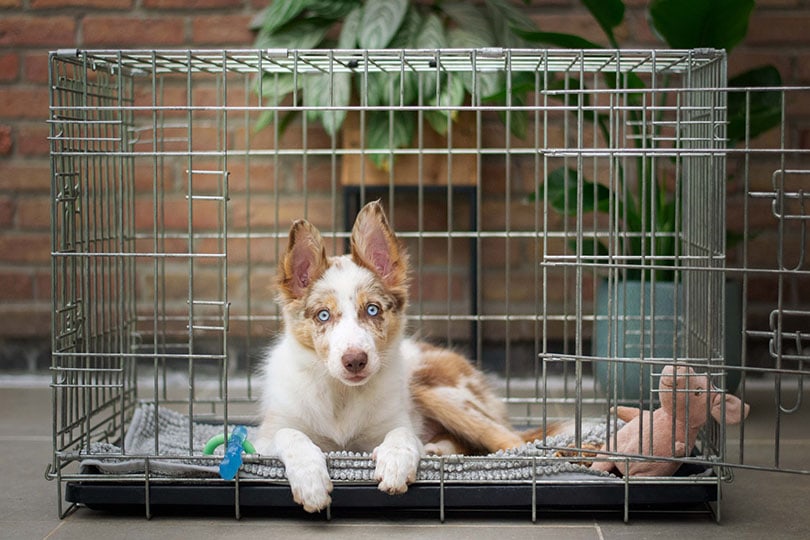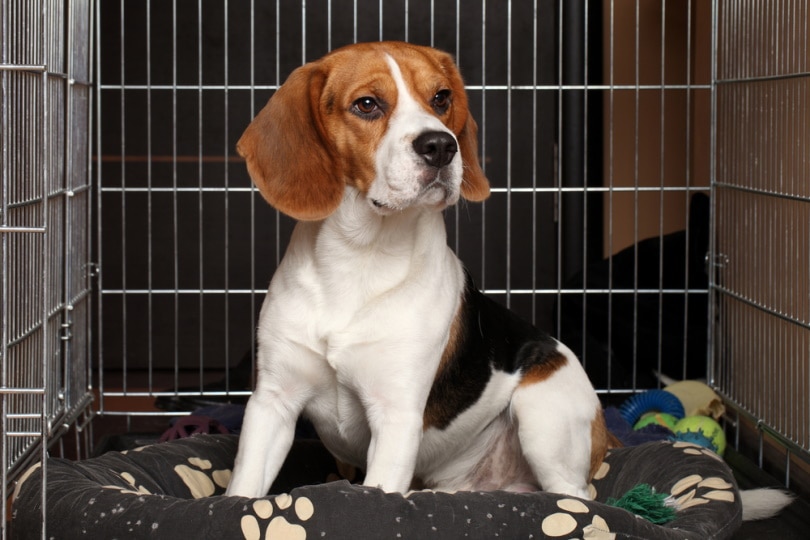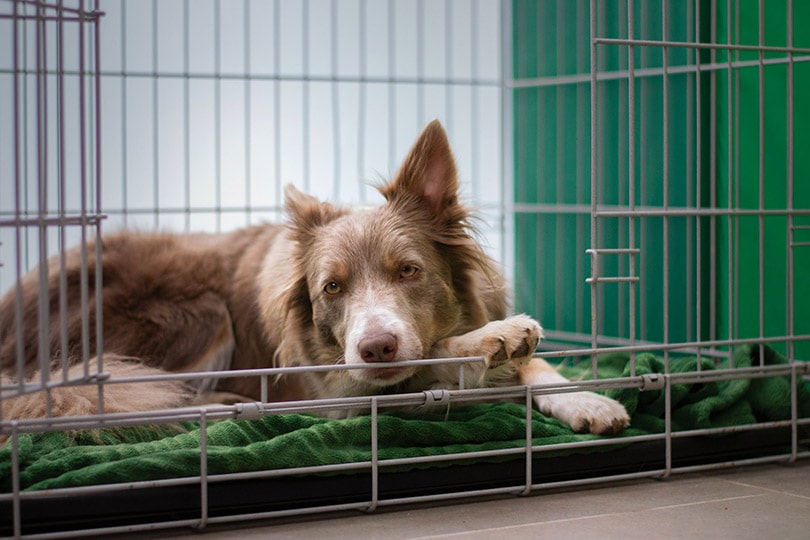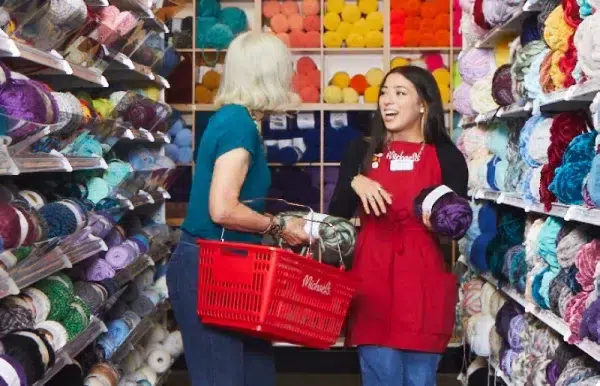In this article
Crating your dog can be a helpful tool for training and providing a secure space for your pet. However, it’s essential to understand the appropriate amount of time a dog can spend in a crate to ensure their physical and emotional well-being. Generally, dogs can stay in a crate for 4 to a maximum of 8 hours at a time, but the specific duration depends on factors, such as age, size, and individual needs. Puppies under 6 months of age should never stay in a crate longer than 3 hours, as they cannot control their bladders.

The Purpose of Crating Your Dog
Training and Housebreaking
Crating is a popular and effective method for housebreaking puppies and teaching them boundaries in a positive way. Providing a confined and comfortable area helps establish a routine for your dog and prevents accidents when you are not around to supervise.
Dogs instinctively avoid soiling their sleeping areas, making crate training an important tool for teaching them to eliminate outside or in designated spots, as long as they are not crated for too long. Crates should never be used as a method of punishment.

Developing Good Habits
In addition to housebreaking, crating can also help your dog develop good habits and prevent destructive behavior. When used correctly, crate training can discourage unwanted behaviors, such as chewing on furniture or other household items. Associating the crate with tasty treats and interactive toys can be a great way to get your dog to love spending time in their crate.
Teaching Independence
Crate training can also teach your dog to be more independent and comfortable when left alone. This can be particularly beneficial for dogs that may experience separation anxiety or have difficulty settling down when their owners are away. In this case, training them gradually over a longer period by slowly extending the time they are left on their own, while also providing plenty of physical exercise and mental enrichment, may help reduce their anxiety.
If your dog is suffering from anxiety, speak to your vet and a canine behaviorist. They should never be left alone for more than 4 hours, and providing plenty of safe chew toys, such as Kongs (not toys they can tear up and swallow), slow feeders, and calming pheromone diffusers, is crucial to reduce their stress and prevent boredom.
If you need to speak with a vet but can't get to one, head over to PangoVet. It's our online service where you can talk to a vet online and get the advice you need for your dog — all at an affordable price!
Providing a Safe Space
A crate can serve as a safe and comfortable space for your dog, giving them a sense of security and a place to retreat when they are feeling overwhelmed or anxious. By creating a positive association with the crate, your dog will view it as their personal sanctuary, which can help reduce stress and anxiety. They will choose to go into their crate, and the goal is to eventually leave the crate door open, meaning your dog has made a choice to use it instead of being forced.
The crate needs to be big enough to allow the dog to freely stand, stretch, and turn around without touching any of the sides or the top, as well as lie down comfortably.

Reducing Anxiety During Travel
Crates can also provide a familiar and secure environment for your dog during travel or when visiting unfamiliar places. Ensuring that your dog feels safe and comfortable in their crate can make these experiences less stressful and more enjoyable for both you and your pet.
Protection From Hazards
A crate can also protect your dog from potential hazards when you are unable to supervise them directly. For example, a crate can keep them away from dangerous household items or prevent them from escaping through an open door.

Factors Determining Crate Time
Generally, dogs can stay in a crate for up to 8 hours at a time, provided that they have access to food and water and they are toilet trained. If dogs need to stay in a crate for longer than that, it is important to have someone come by to check on your dog and let them outside for a little while to relieve themselves and get some energy out. Let’s look at some other factors that can determine how long a dog can stay in a crate.
- Age – Puppies have poor bladder control and shorter attention spans, so they should not be crated for more than 2 to 3 hours at a time. Adult dogs can generally handle longer periods, up to 8 hours (overnight), but it’s crucial to ensure they have regular breaks for exercise and bathroom needs. Dogs should be taken out to go to the bathroom and exercise before being crated.
- Size – Larger dogs may require more frequent breaks, as they may feel more cramped in their crates, but they will need an XL crate size to allow them to stretch and stand up freely. A DIY crate may be an option in that case as well. Smaller breeds may be more comfortable in their crates for longer periods, but it’s still important to provide breaks for stretching and exercise.
- Temperament – Some dogs naturally adapt to crate training, while others may struggle with anxiety or restlessness. It’s essential to consider your dog’s individual temperament and adjust crate time accordingly. Pushing them beyond their comfort may have an opposite, negative effect and make them even more anxious about being in the crate.
Establishing a Crate Routine
Introduce your dog to the crate slowly, starting with short periods and gradually increasing the duration. This will help your dog become comfortable with the crate and reduce any anxiety or insecurity they may initially experience. Maintain a consistent routine for crating your dog, with regular breaks for exercise and bathroom needs. This will help your dog understand what to expect and make the crate a more positive experience.
Reward your dog with praise, treats, or toys when they enter the crate calmly and when they choose to stay inside. This will help them associate the crate with positive experiences and make it an enjoyable space for them.


The 5 Crate Alternatives
1. Playpens
If your dog requires more space or is uncomfortable in a crate, consider using a playpen as an alternative. Playpens provide a larger area for your dog to move around while still maintaining boundaries. They can be set up indoors or outdoors and are available in various sizes and materials to accommodate your dog’s needs. Many playpens are portable and adjustable, allowing you to create a customized space for your dog that can be easily moved or adjusted as needed.
2. Baby Gates
Baby gates can be used to section off areas of your home, allowing your dog to roam freely within a designated space without being confined to a crate. This option is especially helpful for dogs that may feel overly restricted in a crate but still need some level of containment.
Baby gates are versatile and can be placed in doorways, hallways, or other areas of your home to create a safe and secure space for your dog. Some gates even have additional features such as a built-in pet door for smaller pets to pass through.
3. Exercise Pens
Exercise pens, also known as “x-pens,” are another alternative to crates. Similar to playpens, exercise pens provide a larger enclosed area for your dog to move around while maintaining boundaries. They can be used both indoors and outdoors and are often utilized during dog shows or events to contain dogs in a designated space. Make sure they are well set up and secure so your dog cannot escape, especially if the environment is not safe or is without a gate.

4. Room Dividers
Room dividers can be used to create a separate, designated space for your dog within a larger room. This option is ideal for pet owners who want to keep their dog in a specific area without using a crate or restricting access to an entire room.
5. Dog-Proofing a Room
Another alternative to crating is dog-proofing a room in your home, such as a laundry room or spare bedroom. By removing all hazards and providing a comfortable, safe environment, you can give your dog free rein in that space while still keeping them contained when necessary.

Other FAQ About Dogs and Crates
Q: Is it cruel to crate my dog?
A: Crating your dog is not cruel when done correctly and for appropriate durations. It can provide a secure, comfortable space for your pet and aid in training and housebreaking. Many dogs love their crates and that is their safe space.
Q: Can I crate my dog overnight?
A: Yes, adult dogs can generally be crated overnight, provided they have been given opportunities to eliminate before bedtime and have access to water. Puppies will need to be taken out for bathroom breaks during the night.

Q: How can I make the crate more comfortable for my dog?
A: To make the crate more comfortable, provide soft bedding, safe, indestructible toys, and a water bowl. Ensure the crate is large enough for your dog to stand up, turn around, and lie down comfortably.
Q: Should I cover my dog’s crate?
A: Some dogs may feel more secure with a covered crate, while others may prefer an open view. Observe your dog’s behavior and preferences to determine if covering the crate is beneficial.
Q: Can I use a crate as punishment?
A: No. Using a crate as punishment can create negative associations and increase anxiety. The crate should only be a positive, safe space for your dog.
Q: How do I know if my dog’s crate is the right size?
A: Your dog’s crate should be large enough for them to stand up, turn around, and lie down comfortably. If your dog seems cramped or uncomfortable, you need a larger crate.
Q: Are some dog breeds more suited to crate training than others?
A: While individual temperament plays a significant role, some breeds may be more adaptable to crate training. Breeds with a natural denning instinct, such as terriers, may take more readily to a crate.

Q: Can I crate my dog while I’m at work?
A: Crating your dog while at work is possible, but it’s important to ensure they have regular breaks for exercise and bathroom needs. Consider having a friend, family member, or dog walker visit during the day to provide these breaks.
Q: How can I help my dog overcome crate anxiety?
A: Gradual introduction, positive reinforcement, and providing a comfortable environment can help reduce crate anxiety. If your dog continues to struggle, consult with a professional canine behaviorist or veterinarian for additional guidance.
Q: Should I crate my dog when I have guests over?
A: Crating your dog when guests are over can be helpful if your dog is anxious or overly excitable around new people. Ensure your dog has opportunities for breaks and socialization as appropriate. Reward your dog for being in the crate with toys and treats, and crate them before your guests arrive.
Q: How do I clean my dog’s crate?
A: Regularly clean your dog’s crate by removing bedding, toys, and bowls, and wiping down the surfaces with a pet-safe cleaner. Launder bedding and wash toys as needed to maintain a clean environment.
A: It is generally not recommended for multiple dogs to share a crate, as it can lead to territorial issues, fighting, and increased anxiety. Each dog should have their own crate for their comfort and safety.

Conclusion
While crating can be a beneficial tool for training and providing a safe space for your dog, it’s crucial to ensure that your dog does not spend excessive time confined to their crate. By considering factors such as age, size, and temperament, as well as establishing a consistent routine, you can create a positive crate experience for your dog while prioritizing their physical and emotional well-being.
Featured Image Credit: sophiecat, Shutterstock



















